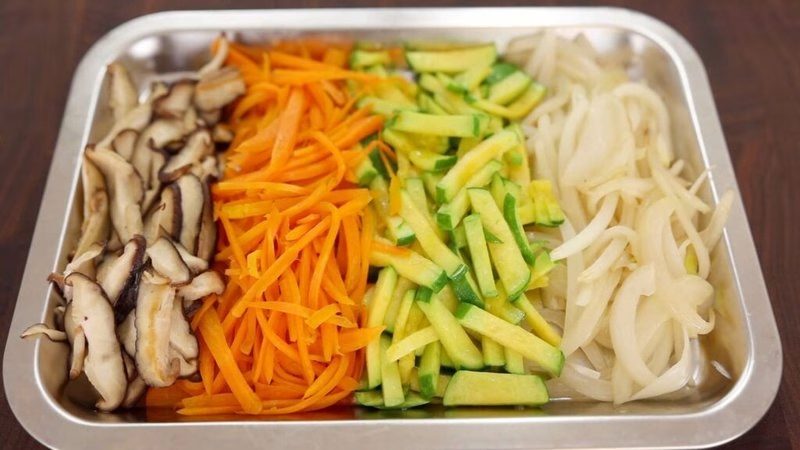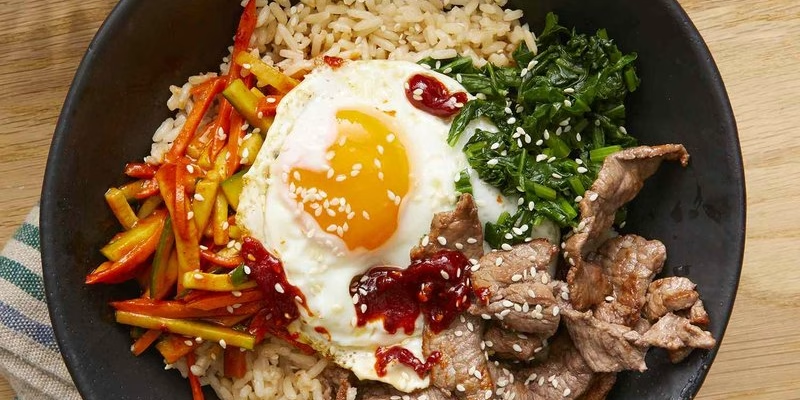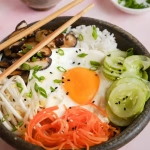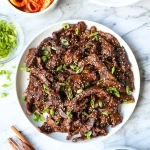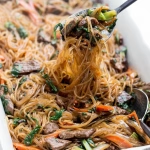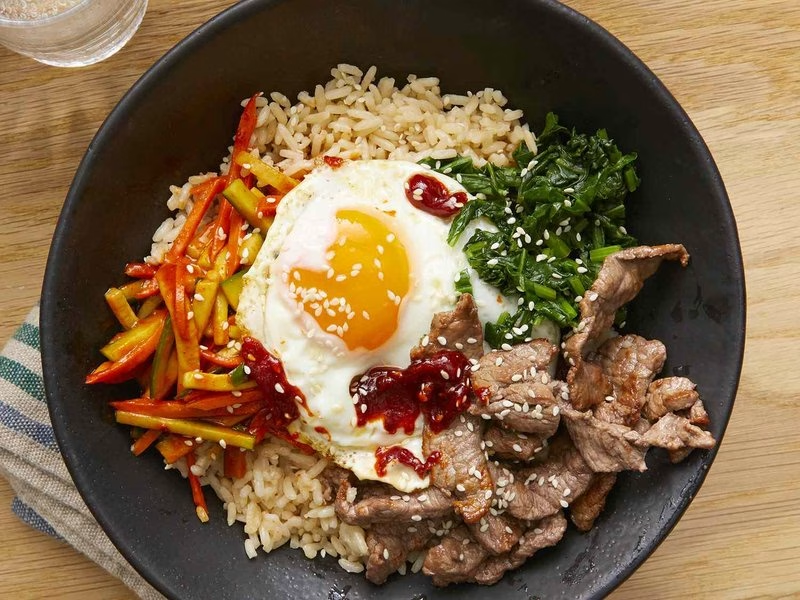
Are you ready to discover a dish that sings with flavor and is as vibrant as a rainbow? Bibim Bap (Rice With Mixed Vegetables) is a Korean delicacy that combines the wholesome goodness of rice with an array of colorful vegetables, topped off with a fried egg and a drizzle of spicy sauce. The beauty of Bibim Bap lies in its unique flavors and endless variations, making it a staple in Korean cuisine. Whether enjoyed at a restaurant or made right in your kitchen, this dish is sure to elevate your mealtime experience.
Originating from Korea, Bibim Bap has a rich history, often served as a way to use leftover ingredients. With its refreshing crunch and satisfying mix of textures, it has become a beloved meal that represents balance and harmony. In this article, you’ll learn how to make Bibim Bap (Rice With Mixed Vegetables) at home, explore delicious variations, and uncover tips for the perfect presentation. Ready to dive in?
Ingredients
| Ingredient | Measurement | Description |
|---|---|---|
| Cooked Rice | 2 cups | Steamed white or brown rice serves as the hearty base for Bibim Bap (Rice With Mixed Vegetables). |
| Carrot | 1 medium, shredded | Fresh carrots add a sweet crunch and vibrant color to the dish. |
| Zucchini | 1 small, julienned | Sautéd zucchini contributes a tender, mildly sweet flavor, balancing the dish. |
| Spinach | 1 cup, blanched | Nutritious spinach adds a fresh taste and a burst of green color. |
| Bean Sprouts | 1 cup | Crispy bean sprouts provide a delightful crunch and are a classic Bibim Bap (Rice With Mixed Vegetables) ingredient. |
| Fried Egg | 1 | A perfectly fried egg adds richness and enhances the overall flavor profile. |
| Gochujang (Korean chili paste) | 2 tablespoons | Spicy and slightly sweet, gochujang is the secret sauce that ties all the flavors together. |
| Soy Sauce | 1 tablespoon | Brings a salty depth that complements the fresh vegetables. |
| Sesame Oil | 1 tablespoon | This fragrant oil adds a nutty richness and final touch to your Bibim Bap (Rice With Mixed Vegetables). |
Step-by-Step Instructions
- Prepare the Ingredients: Start by gathering all your ingredients. Wash and slice your vegetables—shredded carrots, julienned zucchini, and blanched spinach should be readily separated. This will make assembly a breeze for the perfect Bibim Bap (Rice With Mixed Vegetables).
- Cook the Vegetables: In a skillet, heat a little oil over medium heat. Sauté each vegetable separately—carrots first until slightly tender, followed by zucchini, and then add the spinach and bean sprouts briefly. This ensures each retains its individual flavor.
- Prepare the Rice: While the veggies are cooking, warm your cooked rice in another pot or microwave until hot. A bed of steaming rice is crucial for a satisfying Bibim Bap (Rice With Mixed Vegetables).
- Fry the Egg: In the same skillet, fry an egg sunny-side up or to your preference, making sure the yolk remains runny. This adds a creamy texture when mixed with the other ingredients.
- Assemble & Serve: In a large bowl, layer the rice first, followed by the assorted veggies arranged in a colorful fashion around the edge. Place the fried egg on top, then drizzle with gochujang, soy sauce, and sesame oil. Mix everything together before serving to enjoy the beautiful harmony of flavors.
Pro Tips
- For a vegetarian version, swap out meat-based proteins for tofu or add more veggies.
- Make it gluten-free by using tamari instead of soy sauce.
- Experiment with toppings: try adding shredded chicken, beef, or even kimchi for a spicy kick!
- Feel free to customize your Bibim Bap (Rice With Mixed Vegetables) with seasonal produce for a fresh twist.
- Don’t skimp on the sauce! The right amount brings everything together and enhances the flavor tremendously.
Nutritional Information
| Nutrient | Per Serving |
|---|---|
| Calories | 480 |
| Protein | 15g |
| Carbohydrates | 70g |
| Saturated Fats | 2g |
| Fiber | 5g |
| Cholesterol | 186mg |
| Sugars | 5g |
| Fats | 12g |
FAQs
What is the best way to store Bibim Bap (Rice With Mixed Vegetables)?
Store leftovers in an airtight container in the refrigerator. Reheat in the microwave or on the stovetop before enjoying.
Can Bibim Bap (Rice With Mixed Vegetables) be made vegan or gluten-free?
Absolutely! Use tofu instead of egg for a vegan option, and sub in tamari for soy sauce to keep it gluten-free.
What are the best side dishes to serve with Bibim Bap (Rice With Mixed Vegetables)?
Pair Bibim Bap with kimchi, pickled vegetables, or a refreshing cucumber salad for a balanced meal.
How long does it take to prepare Bibim Bap (Rice With Mixed Vegetables)?
Preparation typically takes about 30 minutes, especially if you pre-cook your rice or use leftover rice!
Can I freeze Bibim Bap (Rice With Mixed Vegetables) for later?
While it’s best fresh, you can freeze the cooked components separately. Reheat thoroughly before serving.
What other proteins can I use in Bibim Bap (Rice With Mixed Vegetables)?
Chicken, beef, or even seafood work beautifully in Bibim Bap. Grilled or stir-fried, they add a savory touch.
How can I make my Bibim Bap (Rice With Mixed Vegetables) spicier?
For an extra kick, increase the amount of gochujang or add sliced hot peppers.
Is Bibim Bap (Rice With Mixed Vegetables) traditionally served cold?
It’s usually served warm, though some enjoy it with a cooler, refreshing aspect when mixing the ingredients.
To wrap it all up, Bibim Bap (Rice With Mixed Vegetables) is not just a meal; it’s a colorful celebration on a plate, bursting with flavors and nutrients. With its simple steps and flexibility, it’s easy to make this dish a personal favorite. Why wait? Get cooking and bring this taste of Korea into your home today!
Have you tried this Bibim Bap (Rice With Mixed Vegetables) recipe? Let us know your experience in the comments below!
